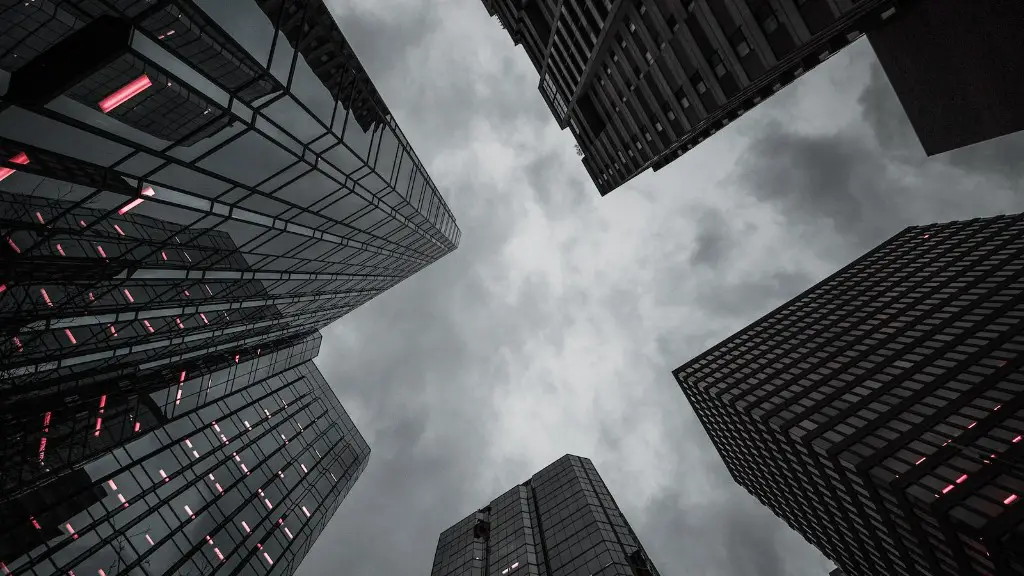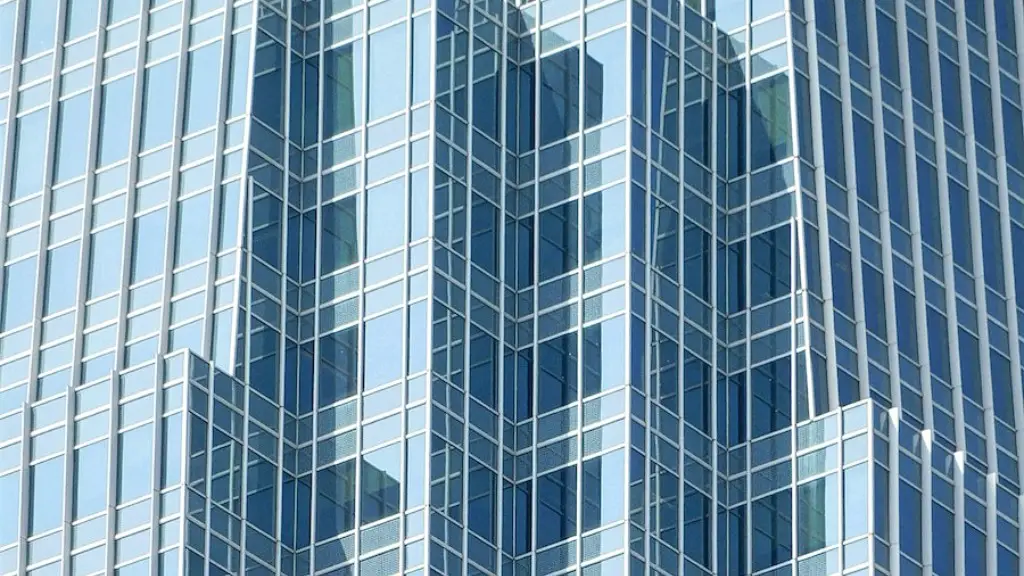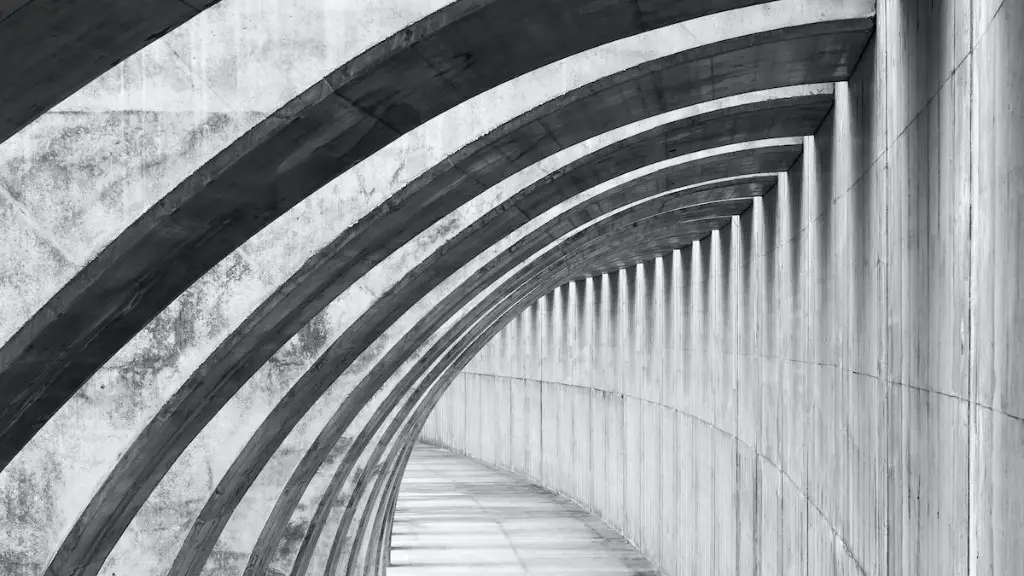Green architecture is a term used to describe buildings and other structures that are designed to be environmentally friendly and sustainable. This type of architecture often incorporates features such as energy-efficient windows and appliances, solar panels, and rainwater harvesting systems. Green architecture can also include the use of recycled or sustainable materials in construction.
There is no one answer to this question as green architecture can mean different things to different people. In general, green architecture is a term used to describe buildings or homes that are designed and built in an environmentally friendly way. This can include using sustainable and recycled materials, incorporating energy efficient features, and using green building practices.
What is the meaning of green architecture concept?
Green architecture is a philosophy focused on designing buildings with the lowest possible negative impact on the surrounding environment by using sustainable materials and energy sources in construction. The goal of green architecture is to create a healthy, sustainable environment that does not put strain on the earth’s resources. Green architecture is also known as sustainable design or ecological design.
Green buildings are designed to be environmentally responsible and resource-efficient throughout their life-cycle from siting to design, construction, operation, maintenance, renovation, and demolition.
The specific characteristics of a green building may vary depending on its type, location, and climate, but all green buildings share certain basic characteristics.
Green buildings are designed to:
– Minimize their impact on the environment
– Be energy and water efficient
– Be constructed from sustainable materials
– Be healthy places to live and work in
– Be designed for flexibility and adaptability
Sustainable sites:
Green buildings are sited and designed to minimize their impact on the environment. They are located and designed to take advantage of natural resources and features, such as sunlight, wind, and water.
Efficient use of water:
Green buildings use water efficiently, both inside and outside the building. Water-efficient fixtures and landscaping help to reduce the amount of water used, while greywater systems recycle water from within the building for use in landscaping.
Energy and atmosphere:
Green buildings are designed to be energy efficient, using less energy than conventional buildings. They take advantage of natural lighting and ventilation, and use energy-
What is an example of green architecture
The Shanghai Tower is a supertall skyscraper in Shanghai, China. It is the world’s tallest building by height from ground to pinnacle, and the world’s second-tallest building by height from ground to roof. The Shanghai Tower is also the world’s tallest observation deck, with an indoor observation deck on the 121st floor and an outdoor observation deck on the 118th floor. The building has a total of 128 stories, with a height of 632 meters (2,073 feet). The Shanghai Tower is the tallest building in China, and the second-tallest in the world.
The building’s exterior is covered in a double layer of glass, which serves as a natural ventilation system and also reduces energy costs. The exterior of the building is also fitted with 270 wind turbines, which power the exterior lights.
Green buildings are designed to reduce the overall impact of the built environment on human health and the natural environment by:
Efficiently using energy, water, and other resources
Protecting occupant health and improving employee productivity
Reducing waste, pollution and environmental degradation.
What are 4 elements of buildings using green architecture?
Green building is becoming increasingly popular as people become more aware of the impact of their homes on the environment. There are four main elements to consider when building a green home: increasing energy efficiency, selecting materials that are good for the environment, increasing the efficiency of water usage, and improving air quality.
Increasing energy efficiency is important because it reduces the amount of energy that your home needs to function. This can be done in a number of ways, such as using energy-efficient appliances, installing solar panels, and insulating your home.
Selecting materials that are good for the environment means choosing materials that are sustainable and have a low environmental impact. Some examples of sustainable materials are bamboo, recycled plastic, and wool.
Increasing the efficiency of water usage is important because it helps to conserve this valuable resource. Some ways to increase water efficiency include using low-flow fixtures, collecting rainwater, and xeriscaping.
Improving air quality is important because it can improve the health and productivity of your family. Some ways to improve air quality include using air purifiers, planting trees, and avoiding toxic chemicals.
Green buildings are becoming increasingly popular as people become more aware of the impact of their buildings on the environment. There are many different components that make up a green building, and each one plays an important role in making the building more environmentally friendly. Aluminum weather resistant insulated access panels are one of the most important components of a green building. These panels help regulate indoor temperature and prevent moisture and pests from entering. Energy efficient windows are another important component of a green building. These windows help to reduce the amount of energy needed to heat and cool the building, and they also help to reduce the amount of light that is let into the building. Green roofs are another important component of a green building. Green roofs help to insulate the building and reduce the amount of heat that is lost through the roof. Solar power is another important component of a green building. Solar power can be used to power the building and to heat and cool the building. Water conservation is another important component of a green building. Water conservation helps to reduce the amount of water that is used in the building and helps to reduce the amount of wastewater that is produced. Recycling is another important component of a green building. Recycling helps to reduce the amount of waste that is produced by the building and helps
What are 3 benefits of green buildings?
Green buildings are those that are designed, constructed and operated in a way that is environmentally responsible and resource-efficient throughout their life-cycle from siting to design, construction, operation, maintenance, renovation and deconstruction. This includes selecting materials and products that have a reduced impact on human health and the environment.
The benefits of green buildings are many and varied, but can be grouped into three broad categories:
1. Environmental benefits – Green buildings can help to reduce the negative environmental impacts of the built environment, including reducing carbon emissions, energy consumption, water use and waste generation.
2. Economic benefits – Green buildings can save money through improved energy and water efficiency, and often have higher resale values.
3. Social benefits – Green buildings can improve the health and wellbeing of occupants, and create a more sustainable built environment for future generations.
There are many other benefits of green buildings, but these three are the most commonly cited.
Green buildings are environmentally responsible and use resources efficiently, which can help to save money, create jobs, and reduce pollution and greenhouse gas emissions. They also provide a healthier indoor environment for occupants.
However, there are also some potential disadvantages to consider when deciding whether to build green.
One is the initial cost. While green buildings may save money in the long run through improved efficiency, the upfront cost can sometimes be more expensive than conventional buildings. This is because many of the materials and technologies used in green construction are still relatively new and therefore more expensive than traditional building materials.
Another potential drawback is that funding for green building projects can be hard to get from banks and other financial institutions since the risks are often seen as higher. This is because the technology and methods used in green construction are still relatively new and untested.
Finally, green construction materials are not always as readily available as traditional materials. This can make it difficult to find the right products and get them delivered to the jobsite on time.
Is green architecture really sustainable
Green buildings help reduce the effects of climate change by using less energy and water, generating less waste, and emitting less greenhouse gases. They also create a “win-win” situation for construction firms and building owners by providing economic benefits such as lower operating costs, increased asset value, and higher rents.
There are many green business ideas that can help support sustainable fashion. Some of these include becoming a tailor, repairing bicycles, growing your own food, launching a native landscaping business, and learning local floristry. Additionally, growing healing tea and herbs, and designing small-space gardening tools, are also great green business ideas.
What is a good example of green building?
The CII-Sohrabji Godrej Green Business Centre (GBC) is an architectural masterpiece that serves as an excellent example of passive architectural design. The GBC was the first building outside of the US to be awarded LEED platinum rating at the time of its inaugration, and continues to set the standard for sustainable, energy-efficient buildings worldwide.
It is important to use building materials that are non-toxic, ethical and sustainable in order to protect the environment. Renewable energy sources, such as solar energy, should be used whenever possible to conserve resources. Water should be used efficiently to reduce wastage and pollution. Recycling and re-use of materials is also important to reduce waste.
Why is green architecture good for the environment
Green buildings and communities are important for reducing our impact on the environment. They help to reduce landfill waste, enable alternative transportation use and encourage retention and creation of vegetated land areas and roofs. High-performing green buildings, particularly LEED-certified buildings, provide the means to reduce the climate impacts of buildings and their inhabitants.
A green building is a structure that is designed and built with the intention of minimizing the impact on the environment. Green buildings are constructed using sustainable materials and incorporating energy efficient methods in order to reduce the overall carbon footprint. The goal of green buildings is to create a healthy and comfortable space for occupants while also reducing the negative environmental impact of the construction and operation of the building.
The components of a green building can be divided into seven categories: energy efficiency and renewable energy, water efficiency, environmentally friendly building materials, waste reduction, toxics reduction, indoor air quality, and smart growth and sustainable development.
Energy efficiency and renewable energy are the most important components of a green building. By using energy efficient methods and materials, a green building can reduce its overall energy consumption. Additionally, renewable energy sources can be used to offset the energy used by the building.
Water efficiency is another important component of a green building. by using water efficient fixtures and appliances, a green building can reduce its water consumption.
Environmentally friendly building materials are those that have a lower environmental impact than traditional building materials. These materials can include recycled materials, sustainably sourced materials, or materials that are designed to last longer.
Waste reduction is another key component of
What are the 5 pillars to the green plan?
The Green Plan is a five-year plan that was launched in 2019 aimed at making Singapore more sustainable. The plan features five key pillars: City in Nature, Sustainable Living, Energy Reset, Green Economy, and Resilient Future. The plan is spearheaded by five ministries: the Ministry of National Development, the Ministry of Sustainability and the Environment, the Ministry of Trade and Industry, the Ministry of Transport, and the Ministry of Communications and Information.
Green building materials are those that are environmentally friendly, durable, and affordable. Some of the most popular green building materials include stone, cob, bamboo, cork, adobe brick, straw bale, cordwood, and earth bags. living in a stone structure is low maintenance and eco-friendly, and any extra stone leftover from the build can be used for home finishings such as countertops or tile.
What are the major challenges of green building
The challenges with making buildings more sustainable are many and varied. The key challenges, as identified from the extant literature, are higher costs of sustainable building processes and materials; construction process technicalities; long bureaucratic processes; unfamiliarity with sustainable technology; inadequate awareness; and lack of sustainable product information.
The challenges are significant, but not insurmountable. With the right policies in place, and the right level of awareness and understanding, the construction industry can make the shift to more sustainable practices.
There are many ways to make a building more green, and more energy efficient. Some examples include radiant floors, gray water recycling, solar power, geothermal systems, and energy efficient windows. All of these systems work together to make a building more sustainable and reduce its impact on the environment.
Conclusion
Green architecture is an approach to building design that focuses on creating a sustainable built environment. Green architecture saves energy and resources while minimizing the negative impact on the environment.
Green architecture means designing and constructing buildings and other structures with sustainable development in mind. This includes using local and renewable materials, incorporating energy-efficient features, and creating designs that minimize the impact on the environment.





